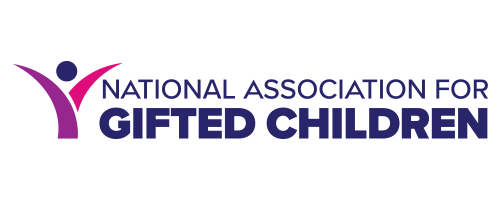Metacognition: Empower Your Students’ Super Thinking
By Jeanne Paynter, Tuesday, February 6, 2024
NAGC asked its 2024 Teachers Summit (held online February 13-14, 2024) speakers to share additional information about their presentations via the NAGC Blog. Jeanne Paynter will be presenting on the topic of Metacognition: Empower Your Students’ Super Thinking on February 13 at 2:30 p.m. ET.
“Stop, look, and listen before you cross the street.” This is an early example of how we teach children metacognition: literally, thinking about (our) thinking. Metacognition is that “above and beyond” analytical thinking we use to set goals, plan, select appropriate problem-solving strategies, modify/control our behavior, reflect on our progress (or lack), and make effective changes. We use metacognition when we ponder: “What is the best way to solve this problem? Am I being successful with this strategy, or do I need to make modifications? What goals motivate and engage me? What are my strengths and weaknesses as a learner?”
Effective metacognitive skills empower learners to become more confident and successful, and a lack of these competencies is a risk factor in the underachievement of gifted students, particularly as they approach adolescence and begin developing their talent in a domain.
The good news is that metacognitive competencies can be taught. In fact, you are probably teaching some right now: different approaches for planning tasks, solving math problems, decoding, interpreting, or self-control. That’s great! But do you wonder why it seems that these strategies just don’t stick?
I know I did, and I think I’ve found a solution. We need to teach the concept of metacognition itself. Our brains are meaning-making machines: They work best when they can “connect the dots” and form relationships between new knowledge and old. That’s concept-building, forming neural pathways.
Metacognition is “expert thinking,” and I have identified it as one of what I call the “seven aptitudes of innovators”: curiosity, logical reasoning, creativity, insight, metacognition, persistence, and leadership. I believe that for today’s learners, developing these long-term aims are as important as acquiring content and skills.
However, I know you have content to teach and curriculum to cover! So, my solution is that we teach the aptitudes of innovators, including metacognition, in the context of our current curriculum. I’m going to share five steps you can use to do this, starting tomorrow!
STEP 1. EXPLAIN.
Let’s define metacognition explicitly. This gives us a shared understanding, so everyone is aware of the goals we want to achieve. The Teacher Goal becomes a lens through which to observe student behaviors. The Student-Directed Goal does just that, providing learners with explicit targets, supporting student agency and efficacy.
- Teacher Goal: The metacognitive student understands own thought processes, self-selects appropriate problem-solving strategies; plans, self-monitors, reflects, self-assesses, and corrects; learns from mistakes.
- Student-Directed Goal: I use metacognition to understand how I think, learn, and solve problems. I use that knowledge to complete tasks, improve my work, and learn from my mistakes.
STEP 2. EXPLORE:
Learners are going to “search out” the attributes of metacognition as they are occurring in your classroom. Start concept-building by explicitly pointing out the attributes every time they arise in daily instruction. I call these pointers “think alouds,” which is metacognition in action. Soon your students will be “talking metacognition” to themselves to each other.
Which of these metacognition Think-Alouds can you use or modify for your lesson tomorrow?
- Use your metacognition to choose which of these three projects interest you most.
- The reasons you gave for choosing that project, strategy, etc. show that you use metacognition to understand how you learn best.
- I’m returning yesterday’s quiz. Use your metacognition to think of three strategies to improve.
- Here is the experiment. Use your metacognition to decide the best order of the steps.
- Turn and Talk: Use your metacognition to tell your neighbor your greatest strength in this class. Then tell them the area you need to improve.
- A test is coming up next week. Use your metacognition to determine how you should prepare.
STEP 3: EMBED.
Your students are familiar with the attributes of metacognition, now go deeper! Embed metacognition into your regular instructional goals. It’s easy when you use what I call an “aptitude action statement” to give a personal purpose (the why) for learning content and skills. Your new talent-targeted goal requires students to demonstrate the aptitude as they apply their content knowledge. Here are a few examples. Create your own goals with tasks from your curriculum.
- Use your metacognition to . . . role play the different character’s perspectives on (a conflict).
- Use your metacognition to . . . analyze the ethical choices made by (historical/political figure)
- Use your metacognition to . . . choose an effective problem-solving strategy for (specific task)
STEP 4. ENGAGE:
Learners need to apply metacognition to critically think about content. One of my favorite strategies that works across content areas is Kohlberg’s Discussions of Moral Dilemmas. These engage metacognition by examining the ethical thinking/reasoning used in making decisions about dilemmas, situations with two defensible courses of action. What are some moral/ethical dilemmas in your content area? Click the link to this sample plan and start the discussion tomorrow!
STEP 5. EVALUATE:
What does it look like when learners are developing higher-order thinking skills? I knew I needed new assessment tools, so I developed the Talent Aptitude Learning Progressions to approximate what metacognition (and the other aptitudes of innovators) look like at the emerging, developing, and advancing stages. Use these “statements of ability” to create rubrics for teacher formative feedback and student self-reflection. Click this link to see the teacher and student rubrics for metacognition.
If you use these five steps, you are sure to teach the concept of metacognition so that it “sticks.” Start today to empower your students’ “Super Thinking!”
Dr. Jeanne L. Paynter is a writer, teacher, and consultant. She founded Educating Innovators to partner with schools to achieve the mission that all learners discover and develop their unique potential to be tomorrow’s innovators— those creative problem solvers who change our world for the better. As the state specialist for gifted and talented education at the Maryland State Department of Education (MSDE), Jeanne directed numerous grant projects to increase the participation and success of low income and minority students in PK-12 advanced programming. Previous to her work at MSDE, she was the Coordinator for Gifted Education and Magnet Programs K–12 in Baltimore County Public Schools, a large urban-suburban district.


